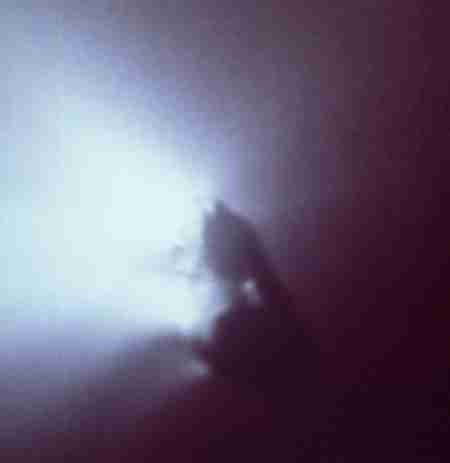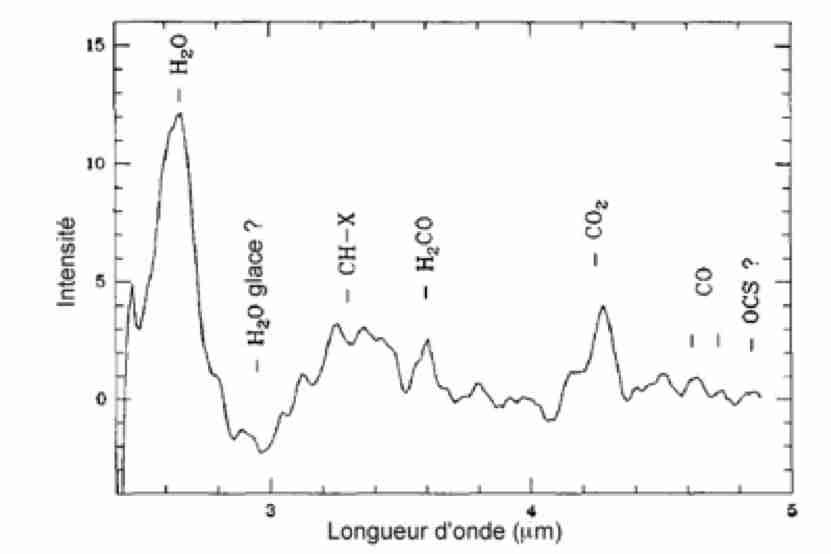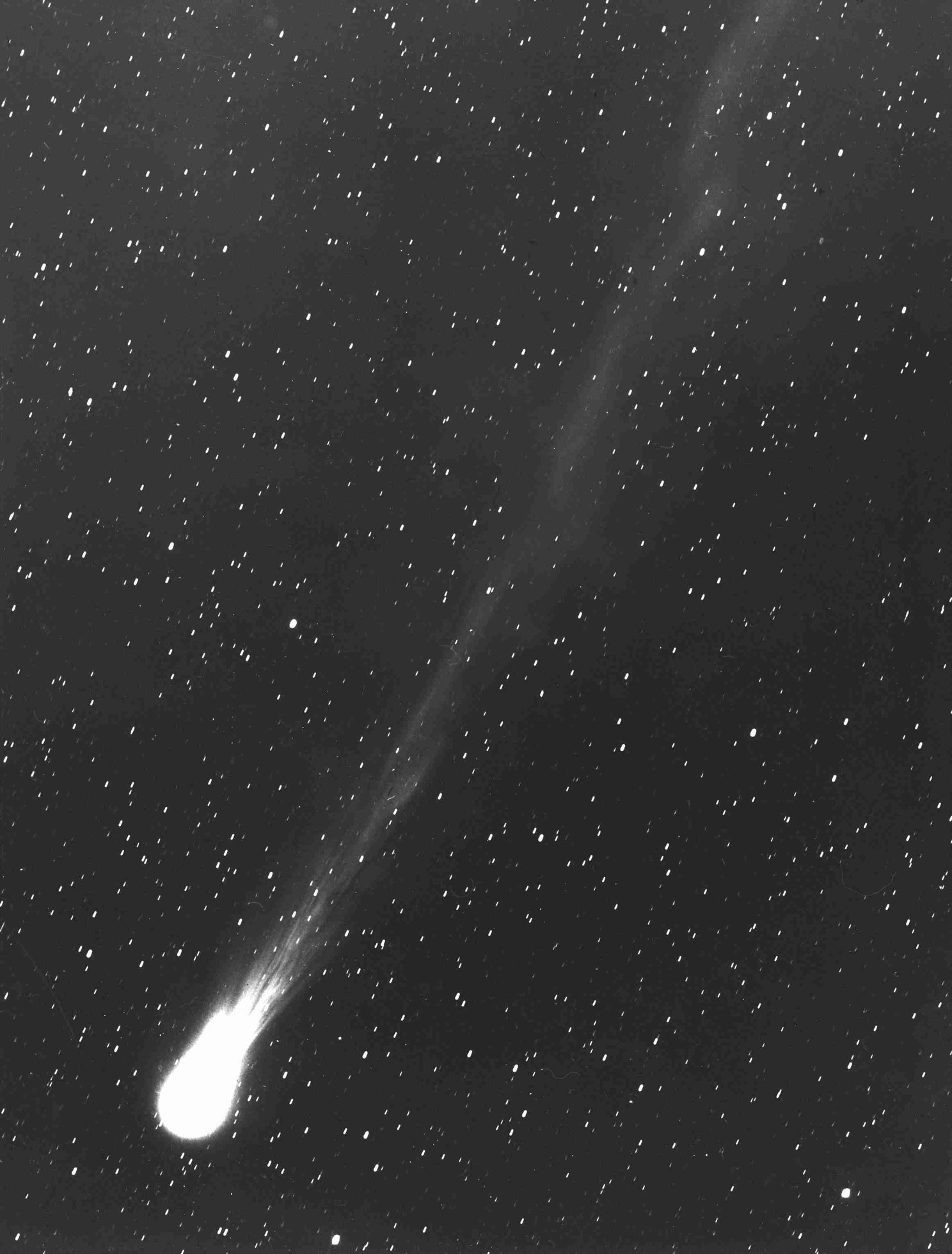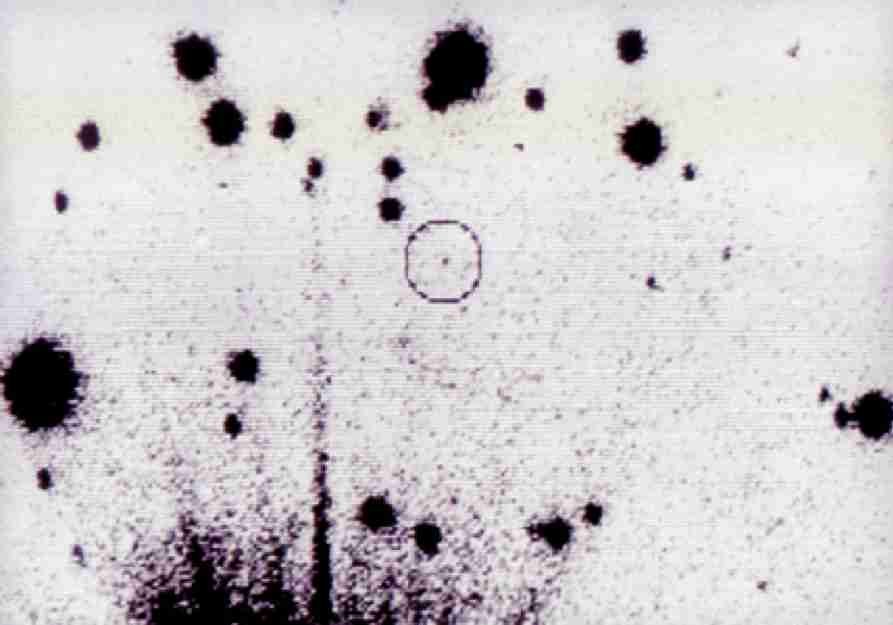This was fortunately not the case for the probes that approached the comet. The Giotto and Vega 2 probes provided the first images of a comet nucleus. The Vega’s images were of poor quality, but they showed that this nucleus was far from spherical. The first image of Giotto was saturated, because the very bright dust emitted by the comet nucleus was centered by the camera.
Fortunately, after the initial fear, one managed to get a good image. Surprise: the nucleus was very dark, almost black, and that was why it had been so hard to see. It was probably covered by a dust layer, under which the ice was buried. It sublimated in some areas under the effect of heating by the Sun, forming jets whose extensions were the famous plumes described by Arago.

Le noyau de la comète de Halley vu par la sonde Giotto en mars 1986. Le noyau lui-même est très sombre dans les parties qui ne sont pas éclairées par le Soleil, car il est recouvert de matériaux solides surmontant la glace. Des points brillants à gauche, chauffés par le Soleil, sont les endroits d’où s’échappent les produits de sublimation de la glace interne, accompagnés de poussières, formant les jets brillants.
Crédit : ESA/ Max-Planck-Institut (MPS)
The scientific observation devices installed in the different probes generally worked well. A particularly interesting result was obtained by the infrared spectrometer IKS built by France, which detected for the first time several parent molecules directly emitted by the nucleus, before they were destroyed or ionized by the solar ultraviolet radiation. One could see the signature of water vapor (already observed with great difficulty from a stratospheric plane), carbon monoxide, carbon dioxide and formaldehyde H2CO. The encounter with Halley’s comet decidedly marked a new era in our understanding of comets.

Le spectre infrarouge de la comète de Halley, obtenu avec le spectrographe IKS placé sur la sonde VEGA. On y voit les émissions de la vapeur d’eau, du monoxyde et du dioxyde de carbone et du formaldéhyde H2CO, ainsi qu’une émission vers 3,3 micromètres (repérée par la mention CH-X) caractéristique de molécules carbonées complexes.
d’après M. Combes et al., Icarus 76, 40, 1988.
La comète de Halley vue de l’Observatoire de Haute-Provence, le 15 janvier 1986. Cette photographie est peut-être la meilleure de la comète à son passage de 1986. Elle présente un aspect classique avec sa queue de poussières. La queue de gaz est trop peu lumineuse pour être visible.
Crédit : Observatoire de Haute-Provence/CNRS